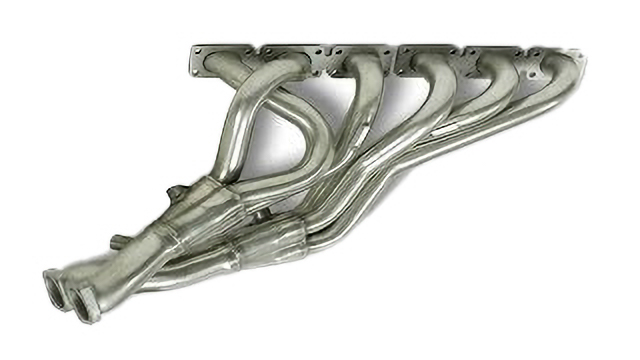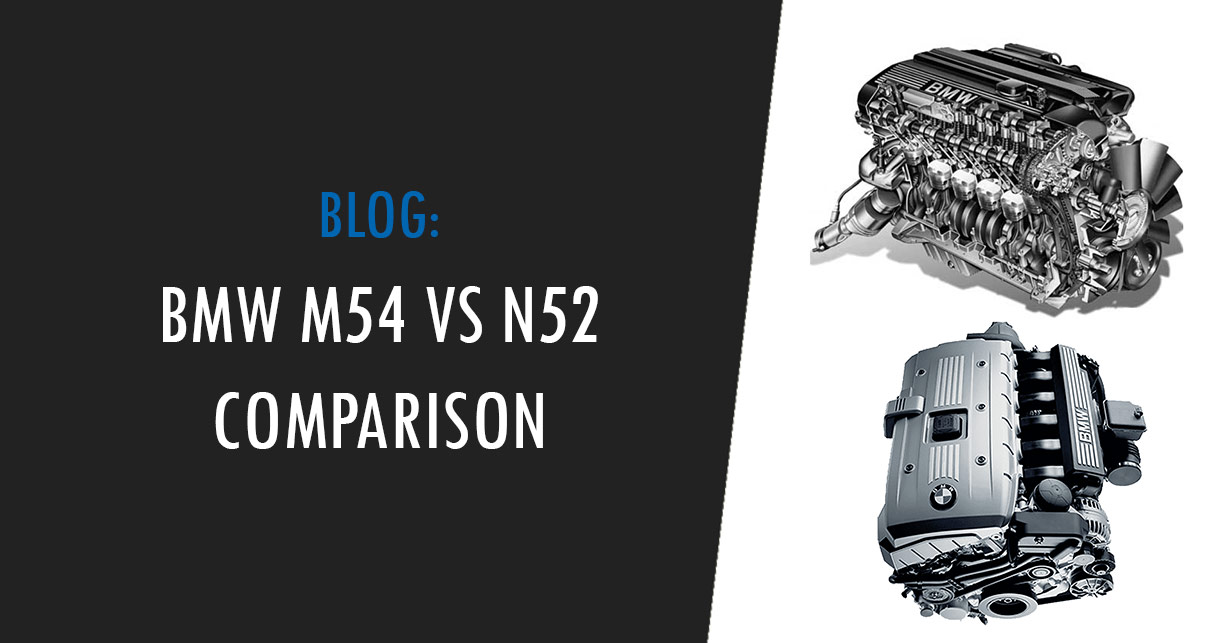The M54 and the N52 engines from BMW will go down in automotive history as the last naturally aspirated straight-six engines made by the Bavarian manufacturer.
Although BMW is now making history again with incredibly strong and performing turbocharged engines, the true roots of the company lie in decades of delightful NA engines.
The M54 was produced from 2000 to 2006 and was used in virtually the entire BMW lineup as a successor to the M52. Most E46s are equipped with this engine, with displacements ranging from 2.2L to 3.0L. Compared to the M52TU it replaced, the M54 features a drive-by-wire fully electronic throttle body and power improvements.
Enter the N52, the direct successor to the M54. Produced from 2004 to 2015, the N52 uses a magnesium/aluminum composite and hollow camshafts to achieve a lighter block and significant weight savings compared to the outgoing M54. The belt-driven water pump is also replaced with an electric water pump and Valvetronic is introduced.
M54 vs. N52 Overview

| M54 | N52 | |
|---|---|---|
| Configuration | Naturally-aspirated Inline-6 | Naturally-aspirated Inline-6 |
| Maximum Horsepower | 228 hp @ 5,900 RPM | 268 bhp @ 6,650 RPM |
| Maximum Torque | 221 lb⋅ft @ 3,500 RPM | 232 lb⋅ft @ 2,750 RPM |
| Displacement | 2.2-3.0L | 2.5-3.0L |
| Bore & Stroke | 84 mm x 89.6 mm (M54B30) | 85 mm x 88mm (N52B30) |
| Block Material | Aluminum | Magnesium-Aluminum |
| Head Material | Aluminum | Aluminum |
| Valvetrain | DOHC with Variable Valve Timing (VANOS) | DOHC w/ Variable Valve Timing (VANOS) & Variable Valve Lift (Valvetronic) |
| Redline | 6,500 rpm | 7,000 rpm |
| Compression Ratio | 10.2:1 | 10.7:1 |
M54 vs. N52 Powerband & Torque
Both the M54 and N52 engines are renowned for their smooth mid-range power delivery and robust torque figures. The main difference lies in the higher rpm range where the N52 wins with significantly higher power output at over 4,500 RPMs and a higher redline.
The N52 also has an earlier peak torque; 232 lb/ft at only 2,750 RPM, staying almost flat up to redline. The M54 on the other hand has a peak torque of 221 lb/ft at 3,500 RPM, a very respectable figure but it comes later on in the RPM range.
The N52 is a more powerful engine
Neither of these engines is known as a crazy powerhouse, but both the M54 and the N52 have more than enough power for a satisfying driving experience, especially when mated to a manual rear-wheel-drive drivetrain.
An automatic xDrive powertrain is not a good pair with either of these engines. The added weight and powertrain losses take away from the driving experience.
M54 vs. N52 Reliability & Maintenance
It’s safe to say that both the M54 and N52 stand as some of BMW’s most reliable and long-lasting modern engines. Their simple, tried-and-tested naturally-aspirated inline-6 configuration, and under-stressed stout engine blocks make these two engines incredibly reliable with just basic maintenance and frequent oil changes.
Both engines are very reliable, but M54 maintenance is cheaper
While both the M54 and N52 are very reliable, they are not immune to common BMW issues like valve cover gasket leaks, and oil filter housing gasket leaks. Water pump failure can happen on the M54, but it’s a much more common maintenance item on the electric water pump of the N52 as the electronics degrade after many heat cycles and the water pump stops functioning.
Apart from the above problem areas, some of the most common M54 issues are clogged PCV valves, leaky vacuum lines, idle control valve issues, DISA valve failure, coolant loss, and faulty VANOS seals. Less common issues include piston ring failure and blown head gaskets.
On the other hand, some of the most common N52 issues besides the leaky gaskets mentioned above are belt tensioner failure, VANOS solenoid issues, PCV valve failure, and water pump failure. Another very common issue of the N52 is the “mickey mouse flange” disintegrating and spilling coolant. We recommend replacing that flange with an aluminum one for peace of mind.
M54 vs. N52 Tune-ability: are these engines tuner-friendly?
Unfortunately, neither the M54 nor the N52 are renowned for being particularly tuner-friendly. Bolt-ons are common upgrades for both, the most common being intake, headers, tune, and a less restrictive exhaust system.

The M54 can react well to upgraded headers, performance intake, a tune, and an exhaust. These upgrades won’t give you massive power gains, but you can expect a noticeable increase of 30hp more or less.
Although not as tuner-friendly as other forced-induction BMW engines of the same year, the detuned N52 found in the North American E90 328i can see respectable power gains with bolt-ons. The 3-Stage intake manifold from the early E90 330i can be retrofitted into the detuned N52s and see gains of 20-25 hp. In addition, an intake, a tune, and modified headers can give a further output increase of 25 hp.
The N52 is more tuner-friendly, but you’d be better off spending that money somewhere else
Spending $3000 in bolt-ons and simple mods for an extra 40 to 50 hp doesn’t seem like a great deal, that’s because it isn’t.
For those looking for substantial power gains, supercharger kits are available for both engines, but these can be quite expensive. A supercharger kit for the M54 can increase power output up to 330 hp, and a supercharger kit for the N52 will put you around the same ballpark.
If you want massive power, you’d be better off putting that money in an N54/N55 car. If budget allows, consider a B58 or S58 powered BMW such as the M340i or M3 as these provide ultimate performance. For lovers of the classic NA straight-6, you’d be better off spending that money on reliability and suspension mods for your M54 or N52 BMW.
M54 vs. N52 Sound: Which Engine Sounds Better?
In BMW’s attempts to build a more refined drivetrain with less noise, harshness, and vibration, the N52 sounds subdued, and tame compared to the more vocal and raspy exhaust note of the M54.
With the stock exhaust system, the N52 is incredibly smooth, quiet, and refined in the low to medium RPM range, only waking up and letting itself be heard at full tilt above 5000 RPMs.
The M54 has a meaner, deeper sound in stock form
If you’re a car guy who loves the classic BMW straight-6 sound, you’ll prefer the deep, raspy, and raw sound of the M54 over the sound of the N52. If you like smoothness and refinement, the N52 is for you.
The M54 engine is often praised for its classic deep and raspy BMW inline-6 sound. This is particularly noticeable at higher RPMs, where the M54 provides a raw and satisfying note compared to the somewhat muffled sound of the N52.
M54 vs. N52 Efficiency & Fuel Consumption
Overall, the N52 has slightly more power and better fuel consumption than the M54, making it the more efficient engine out of the two.
Due to a more modern design, and the use of Valvetronic and Double-VANOS, the N52 consumes less fuel while also putting down more power than the M54. It achieves slightly better MPG on average and is also able to get ~32 MPG on the highway at moderate speeds.

The N52 is more fuel efficient than the M54
The reduced fuel consumption is impressive considering the N52B30 can output almost 260 hp; this is more than an 11% increase in power compared to the M54B30.
That said, for a late ’90s 6-cylinder engine design, the M54 is incredibly efficient, achieving an average of around 23 MPG in a 330i E46, according to Fuelly.
M54 vs. N52: Which One is Right for You?
BMW has completely phased out the M54 and the N52, replacing the latter with the N20 turbo inline-4, an engine that makes more power and consumes less fuel. This might sound great on paper, but a turbo inline-4 will never match the smoothness, linear power delivery, sound, driving feel, and reliability of the good old mighty NA inline-6.
The M54 is the classic robust BMW straight-6
The M54 may be the right choice if you’re looking for a reliable, robust engine that also provides a classic BMW sound at higher RPMs. It’s an engine that still feels very much like a traditional BMW, with a raw and mechanical feel.
The N52 is a more modern and refined engine
The N52, on the other hand, may be a better choice if you’re looking for a more modern engine that provides superior power and torque delivery while offering better fuel economy. The N52 is also a very reliable engine.
In a few years, these two engines will be relics of BMW history, some of the last ever made naturally aspirated straight-6 engines in a world quickly moving to lower displacement, forced induction, and electrified drivetrains.


The best BMW straight 6 was the M52, it sounded great and with a chain swap every 100,000 miles or so lasts well.
Will a N52 engine connect straight onto my Gearbox for M54 engined compact car?
Is there a 2.5 litre version of N52 engine?
What about valve stem seals and piston rings on N52 engine are they better than those on earlier M54 engine?